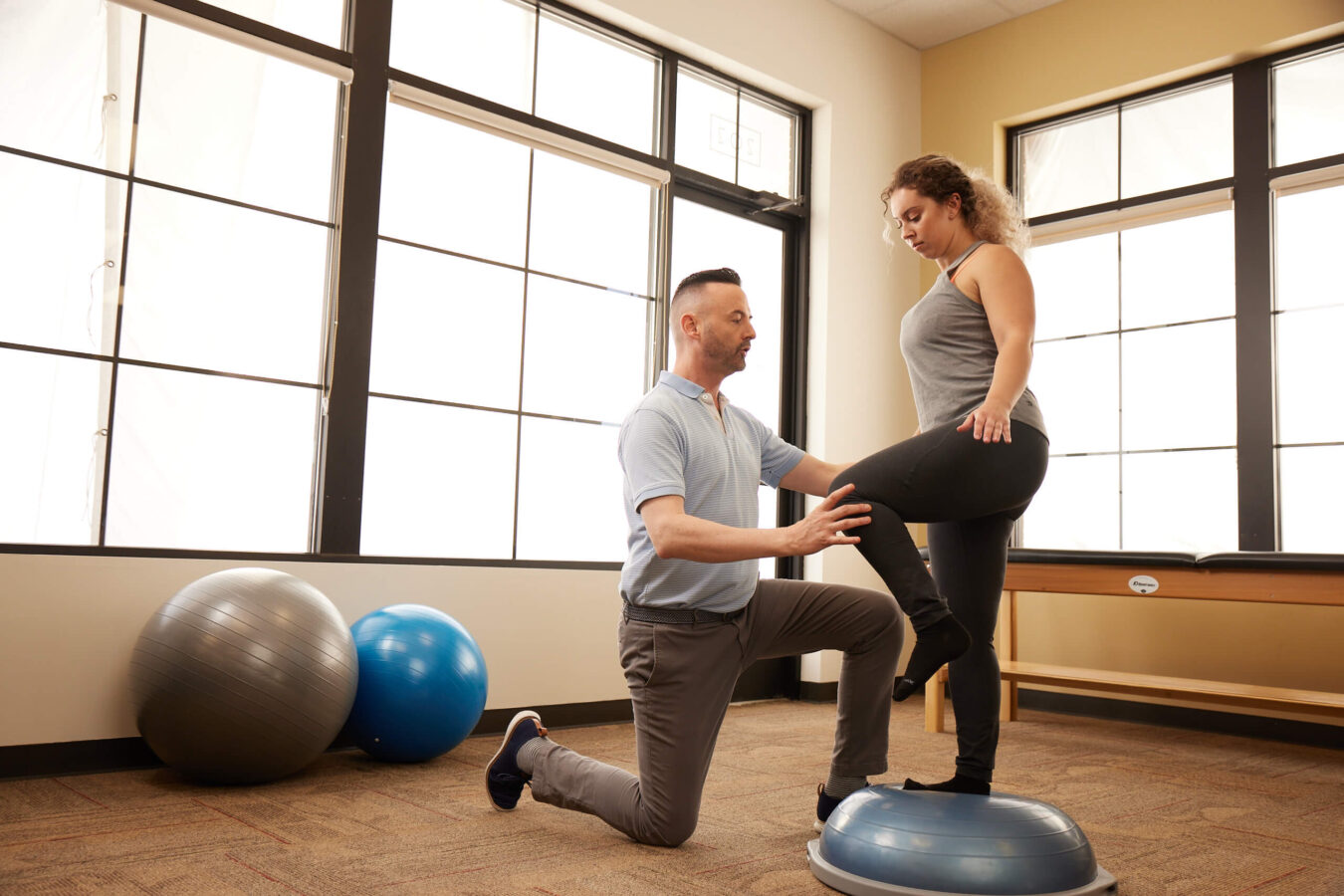
Every year the U.S., nearly 250,000 people tear the anterior cruciate ligament (ACL) located in the center of the knee. Some ACL injuries cause significant pain. Many require surgery and extensive physical therapy. If you play sports or are highly-active, recovery from an ACL tear can be a slow and sometimes frustrating process. Getting ahead of ACL injuries can keep you from being sidelined with a painful tear. Here are some tips to help you stretch, strengthen, and protect the structures of the knee to help prevent an ACL injury.
Ligaments are stretchy, fibrous tissues that connect bones to bones. They support and stabilize the body’s joints. The ACL controls rotation and forward movement of the tibia, or shinbone. Overextending the knee, direct trauma, and sudden, forceful twisting can tear the ACL causing joint pain, swelling, and instability.
In many cases, ACL injuries happen with a sudden twisting motion, as if your feet were planted in one direction and your knees turned the other way. Any sudden change in direction while running, stopping, or jumping can also cause ACL damage. Stopping short, shifting quickly from one leg to the other, and stretching the knee beyond the normal range of motion can all cause ACL injuries.
It’s a common misconception that ACL tears only happen through direct contact with an object or person. That’s not the case. While impact to the knee can tear the ACL, 70% ACL tears are non-contact injuries, according to the American Physical Therapy Association (APTA.)
Any sport or activity that requires twisting, cutting, or pivoting can lead to an ACL injury:
Female athletes are more likely than males to experience ACL injuries because of certain, intrinsic traits like hormonal conditions and body mass differences. The ACL injury prevention techniques that follow are especially important for women who stay active through exercise and sports.
An ACL tear often causes sudden, intense knee pain. The joint may feel unstable making it hard to put weight on the knee joint. The knee may buckle or give out when you try to stand or walk. Some people have an audible “pop” or snap when the injury occurs. Swelling around the knee is also common for ACL injuries.
A proactive approach to avoid ACL injuries can be highly-effective, especially for athletes. Taking steps to ensure the muscles that surround and support the knee are flexible and strong will go a long way to protect the ligaments. Let’s explore ways to do that.
Year-Round Conditioning
It is not enough to train during the season of your sport of choice. In fact, resuming unfamiliar, high-risk movements after a long time off can actually increase your chance of getting hurt. A consistent workout regimen throughout the year is the key to staying in shape and maintaining good balance and body awareness.
This does not mean you should play the same sport year-round as this also has potential negative effects, but you should strive to maintain an off-season conditioning program focused on strength, balance, and movement control. All of these benefits of regular exercise help prevent sports injuries.
Targeted Strength Training
Targeted exercises to strengthen the musculoskeletal components of the knee will make them more resistant to ACL tears and other orthopedic injuries. Strengthening the muscles at the side of the thighs (glutes) back of the thighs (hamstrings) and those at front of the thighs (quadriceps) will help protect the knee joint from injury.
It is also important to include planks and other exercises that help strengthen the core. A strong core helps the body move efficiently. It is good for balance and stability and smooth, controlled movements that are less likely to result in sprains and strains.
Warm Ups and Stretching
Cold, stiff muscles are less flexible and more prone to injury. Warming up muscles makes them more pliable and resistant to damage. Dynamic, sport-specific stretches before working out activate the joints and muscles through the full range of motion.
They help your body get comfortable with the movements to come. Arm circles, walking lunges, and shoulder rolls are three simple dynamic stretches that are beneficial for most sports and activities.
Static stretches after a workout are a key part of the cool-down phase. A static stretch is when you hold a muscle in place as far as it can go without pain for 45-60 seconds. (Some research shows static stretches can actually reduce athletic performance which is why they are recommended for post-workout.)
While warming up and stretching cannot prevent every sports injury, they can possibly reduce their severity: maybe a minor sprain as opposed to a full ACL tear, for example. With a minor injury, you may avoid surgery and have a shorter recovery.
Proper Technique
Pay attention to how you move and practice good alignment and form when you work out or play sports. Proper technique is essential to lessen the impact to your muscles and joints. Your athletic trainer or physical therapist can assess your form and make recommendations.
If you aren’t part of a team sport with easy access to an athletic trainer, consider working with a physical therapist if you train alone or just have questions about the best and safest way to perform certain exercises and movements. Physical therapists are specially-trained to help patients of all ages and abilities move more efficiently. With strategic exercise and stretching, physical therapists improve your strength, balance, and posture to keep you pain and injury-free.
ACL tears are among the most common sports injuries people of all ages experience. Follow the tips above to keep your knees and your body in the best shape possible. If you have knee pain or are recovering from a sports injury, a movement expert is ready to help. Find a physical therapy clinic near you to schedule an evaluation today.

